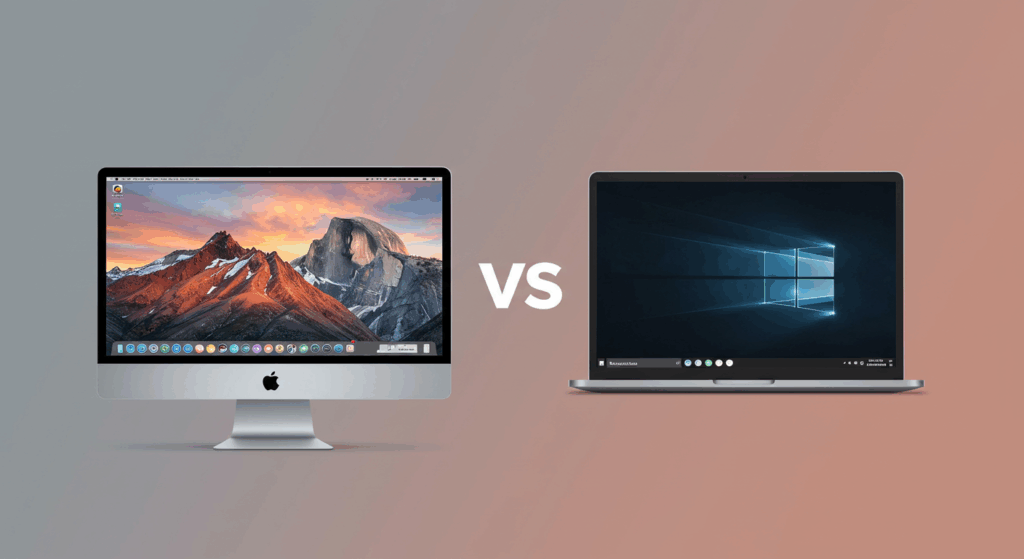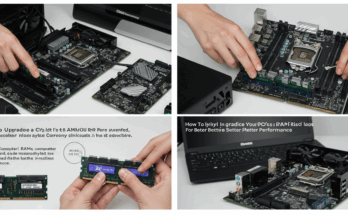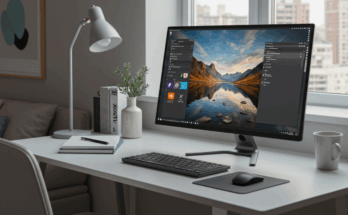As we dive into 2025, the age-old debate of Mac vs. Windows continues to spark passionate discussions among tech enthusiasts, professionals, and casual users alike. Both operating systems have evolved significantly, each catering to different needs, workflows, and preferences. In this blog post, we’ll break down the strengths and weaknesses of macOS and Windows in 2025, comparing them across key categories to help you decide which one comes out on top for your needs.
Performance and Hardware Integration
Mac: Seamless Synergy
Apple’s macOS, running on M4-series chips in 2025, delivers unparalleled performance thanks to its tightly integrated hardware and software ecosystem. The M4 Pro and M4 Max chips offer blazing-fast processing, improved power efficiency, and robust AI capabilities for tasks like machine learning and video editing. macOS Sequoia (or its 2025 successor) optimizes these chips, ensuring smooth multitasking and minimal thermal throttling, even under heavy workloads.
- Pros: Exceptional battery life (up to 20 hours on MacBook models), lightning-fast SSDs, and optimized software for creative workflows.
- Cons: Limited hardware customization and higher price points (starting at $1,299 for a MacBook Air).
Windows: Power and Flexibility
Windows 11 (or its 2025 iteration) runs on a vast array of hardware, from budget laptops to high-end gaming rigs powered by Intel’s Lunar Lake or AMD’s Ryzen AI 300 series. This diversity allows users to tailor their systems for specific needs, whether it’s gaming with Nvidia’s RTX 5090 or productivity with ultraportable Snapdragon X Elite devices. Windows’ performance is strong but can vary depending on the manufacturer’s optimization.
- Pros: Wide hardware compatibility, customizable builds, and support for high-end gaming.
- Cons: Inconsistent performance across devices and occasional bloatware on budget systems.
Winner: Mac for seamless performance; Windows for flexibility.

User Experience and Interface
Mac: Polished and Intuitive
macOS offers a clean, minimalist interface that prioritizes simplicity and consistency. Features like Stage Manager, Continuity Camera, and Universal Control (integrating iPads and iPhones) make multitasking and cross-device workflows effortless. In 2025, macOS is expected to refine AI-driven features, such as enhanced Spotlight search and Siri, leveraging Apple Intelligence for smarter automation.
- Pros: Intuitive design, robust ecosystem integration, and minimal learning curve.
- Cons: Less customizable than Windows; some users find it restrictive.
Windows: Versatile but Complex
Windows 11 has matured with a sleek, modern UI, featuring a centered Start menu and improved window management (Snap Layouts). However, its interface can feel cluttered due to legacy elements and inconsistent app designs. Windows’ Copilot AI has improved in 2025, offering productivity boosts like real-time transcription and task automation, but it’s less integrated than Apple’s ecosystem.
- Pros: Highly customizable, supports a wide range of software, and excels in multitasking.
- Cons: Occasional UI inconsistencies and bloatware on some devices.
Winner: Mac for polish; Windows for customization.
Software and Compatibility
Mac: Quality over Quantity
macOS boasts a curated selection of software optimized for its ecosystem. Apps like Final Cut Pro, Logic Pro, and Xcode shine for creative professionals, while universal apps run seamlessly across Apple devices. However, macOS lags in gaming, with limited AAA title support, though cloud gaming services like GeForce Now are bridging the gap in 2025.
- Pros: High-quality, optimized apps and strong security.
- Cons: Limited software library for niche industries and gaming.
Windows: The Software King
Windows remains the go-to for software compatibility, supporting everything from enterprise tools (SAP, AutoCAD) to the latest games on Steam. In 2025, Windows continues to dominate for developers, gamers, and professionals needing specialized software. However, this openness can lead to security vulnerabilities and inconsistent app performance.
- Pros: Vast software ecosystem, unmatched gaming support.
- Cons: More prone to malware and bloatware.
Winner: Windows for versatility; Mac for optimized apps.
Gaming in 2025
Mac: Catching Up
Apple has made strides in gaming with the Game Porting Toolkit, bringing more titles to macOS via Metal API. In 2025, games like Baldur’s Gate 3 and Resident Evil 4 run smoothly on M4-powered Macs, but the library remains limited compared to Windows. Cloud gaming and Apple Arcade bolster options, but hardcore gamers may find macOS lacking.
- Pros: Improving game performance, excellent display quality.
- Cons: Smaller game library, no native VR support.
Windows: The Gamer’s Choice
Windows is the undisputed gaming champion in 2025, with support for DirectX 12 Ultimate, ray tracing, and VR headsets like the Meta Quest 4. Platforms like Steam, Epic Games, and Xbox Game Pass offer thousands of titles, from indie gems to AAA blockbusters. High-end GPUs and customizable rigs make Windows ideal for enthusiasts.
- Pros: Massive game library, VR support, and high-performance hardware.
- Cons: Higher power consumption and potential driver issues.
Winner: Windows, hands-down.
Security and Privacy
Mac: Fortified by Design
macOS is renowned for its robust security, with features like Gatekeeper, FileVault, and T2 chip encryption (or M4 equivalents). Apple’s privacy-first approach, including App Tracking Transparency and on-device AI processing, ensures user data stays secure. In 2025, macOS continues to lead in malware resistance.
- Pros: Strong built-in security, privacy-focused features.
- Cons: Occasional compatibility issues with non-Apple software.
Windows: Improving but Vulnerable
Windows has bolstered security with Windows Defender and Secure Boot, but its open ecosystem makes it a bigger target for malware. In 2025, Microsoft’s AI-driven threat detection has improved, but third-party antivirus software is still recommended for optimal protection.
- Pros: Flexible security options, improving AI defenses.
- Cons: More susceptible to viruses and phishing attacks.
Winner: Mac for security and privacy.
Price and Value
Mac: Premium Price, Premium Experience
Apple’s hardware comes at a premium, with MacBooks starting at $1,299 and desktops like the Mac Studio reaching $3,999. The cost is justified by build quality, longevity (5-7 years of updates), and resale value, but it’s a steep entry point for budget-conscious buyers.
- Pros: Long-term value, premium build quality.
- Cons: High upfront cost, expensive repairs.
Windows: Options for Every Budget
Windows devices range from $300 budget laptops to $5,000+ gaming PCs. This variety ensures there’s a Windows machine for every budget, but cheaper devices often compromise on build quality or performance. Software updates typically last 2-4 years, shorter than macOS.
- Pros: Affordable options, customizable hardware.
- Cons: Budget devices may lack durability or performance.
Winner: Windows for budget options; Mac for long-term value.
Who Wins in 2025?
The Mac vs. Windows debate in 2025 doesn’t have a one-size-fits-all answer. Mac is the clear choice for creative professionals, those prioritizing security, and users invested in Apple’s ecosystem. Its seamless integration, polished UI, and long-lasting hardware make it a premium pick. Windows shines for gamers, developers, and anyone needing flexibility, affordability, or specialized software. Its vast hardware and software ecosystem ensures it meets diverse needs.
Final Verdict: Choose Mac if you value simplicity, security, and a cohesive ecosystem. Choose Windows if you need versatility, gaming prowess, or budget-friendly options. In 2025, it’s less about which is better and more about which is better for you.
What’s your pick? Let us know in the comments!



